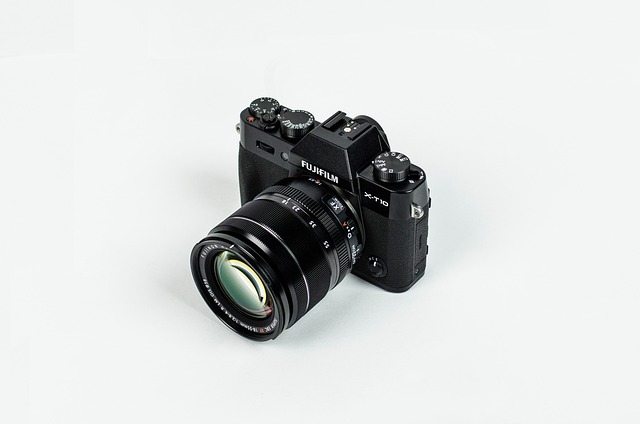Advanced RF Microneedling is a groundbreaking advancement in dermatological skin rejuvenation, combining precise needle penetration with radiofrequency energy for deeper collagen induction and improved skin texture. Outperforming traditional microneedling methods, it offers faster healing times, enhanced effectiveness, and reduced side effects while addressing a broader range of skin concerns. This innovative technique is revolutionizing non-invasive skincare, promising safer, more efficient results for those seeking youthful complexions.
Microneedling, a long-standing skin rejuvenation method, has seen significant advancements with the introduction of Advanced RF Microneedling. Despite its effectiveness, traditional microneedling techniques face limitations, such as invasive procedures and variable results. This article explores these constraints, delving into the Advanced RF Microneedling revolution that promises to overcome these challenges. We examine how radiofrequency (RF) technology enhances skin rejuvenation, benefits for patients and clinicians, and future prospects of this evolving treatment.
Understanding Traditional Microneedling: A Brief Overview

Microneedling is a dermatological procedure that involves using fine needles to puncture the skin, stimulating collagen production and improving skin texture. Traditional microneedling typically employs rolling or manual devices with small needle arrays, creating micro-injuries in the upper dermis layer. This controlled injury triggers the body’s natural healing process, leading to enhanced collagen synthesis and improved skin appearance.
While effective, traditional microneedling has limitations. It can cause temporary redness, swelling, and discomfort. The depth of needle penetration is limited, which may not be sufficient for more extensive skin issues. Moreover, the procedure takes time, with multiple sessions often required to achieve desirable results. In recent years, an advanced alternative known as RF (Radio Frequency) Microneedling has emerged, offering deeper penetration and faster healing times compared to traditional methods.
Common Limitations of Conventional Microneedling Techniques

Microneedling, a popular skin rejuvenation method, has seen significant adoption in the dermatology field. However, conventional techniques come with several limitations. One major drawback is the potential for poor patient compliance; traditional microneedling often requires multiple sessions spread over several weeks, which can be time-consuming and costly. Additionally, it may cause temporary redness, swelling, and discomfort, especially on sensitive skin types, leading to reduced patient satisfaction.
Furthermore, conventional methods may not adequately address deeper skin layers, as the needles typically penetrate only the upper dermis. This can result in less optimal collagen stimulation and skin texture improvement. In contrast, Advanced RF Microneedling overcomes these limitations by combining radiofrequency energy with microneedling, allowing for deeper penetration and more comprehensive collagen induction, offering a potentially more effective and efficient solution for skin rejuvenation.
The Rise of Advanced RF Microneedling: Overcoming Challenges

The field of dermatology has witnessed a significant evolution in skin rejuvenation techniques, and one notable advancement is the emergence of Advanced RF Microneedling. This innovative procedure builds upon traditional microneedling by incorporating radiofrequency (RF) energy to enhance its effectiveness. By combining precise needle penetration with controlled RF heat, it offers a more comprehensive approach to addressing various skin concerns.
Advanced RF Microneedling addresses several limitations of traditional methods. It promotes collagen and elastin stimulation at deeper skin layers, leading to improved skin texture and reduced appearance of fine lines and wrinkles. The targeted delivery of RF energy allows for better control over treatment intensity, making it suitable for a broader range of patients. Moreover, this technology can treat larger areas in less time, increasing efficiency compared to conventional microneedling. These advancements make Advanced RF Microneedling a promising alternative for those seeking superior skin rejuvenation outcomes.
How RF Technology Enhances Skin Rejuvenation

Radiofrequency (RF) technology is transforming skin rejuvenation treatments, offering a more advanced approach compared to traditional microneedling methods. This innovative technique enhances collagen stimulation, a key factor in achieving youthful-looking skin. By combining precise needle penetration with controlled RF energy, Advanced RF Microneedling encourages the body to produce new collagen and elastin fibres, improving skin texture and reducing fine lines and wrinkles.
The enhanced skin rejuvenation process is not only more effective but also provides a safer alternative for individuals concerned about potential risks associated with traditional microneedling. RF technology ensures deeper penetration while minimising collateral tissue damage, allowing for optimal results without the lengthy recovery periods often seen with other methods.
Benefits and Considerations for Patients and Clinicians

Microneedling, a popular skin rejuvenation technique, offers several benefits for both patients and clinicians. By creating tiny pricks in the skin, it stimulates collagen production, leading to improved skin texture, reduced fine lines, and enhanced absorption of skincare products. This non-invasive procedure is often sought by individuals aiming to achieve smoother, more youthful-looking skin without extensive surgery. For Clinicians, microneedling presents an opportunity to provide personalized treatments, catering to diverse patient needs. Advanced RF Microneedling, for instance, combines radiofrequency energy with the needling process, allowing for deeper penetration and potentially faster results.
However, there are considerations to keep in mind. Patient selection is crucial; not all skin types and conditions are suitable for microneedling. Clinicians must assess factors like skin elasticity, depth of wrinkles, and existing medical conditions to ensure safe and effective treatment. Additionally, managing patient expectations is essential, as multiple sessions may be required to achieve optimal results. Despite these limitations, the versatility and potential of microneedling, especially with advanced technologies like RF Microneedling, make it a compelling choice for those seeking minimally invasive skin enhancements.
Future Prospects: Expanding the Capabilities of Microneedling

As technology advances, the future of microneedling looks promising with the emergence of advanced techniques such as Radio Frequency (RF) Microneedling. This innovative approach combines the precision of microneedling with the therapeutic benefits of RF energy, offering a more comprehensive solution for skin rejuvenation. By targeting deeper layers of the skin, RF Microneedling can enhance collagen production, improve texture, and reduce various skin concerns, providing superior results compared to traditional methods.
The integration of advanced technologies like RF energy expands the capabilities of microneedling, making it a versatile tool in dermatological treatments. With its ability to address multiple skin issues, this method has the potential to revolutionize skincare routines, offering patients safer and more effective alternatives for achieving youthful-looking skin.
